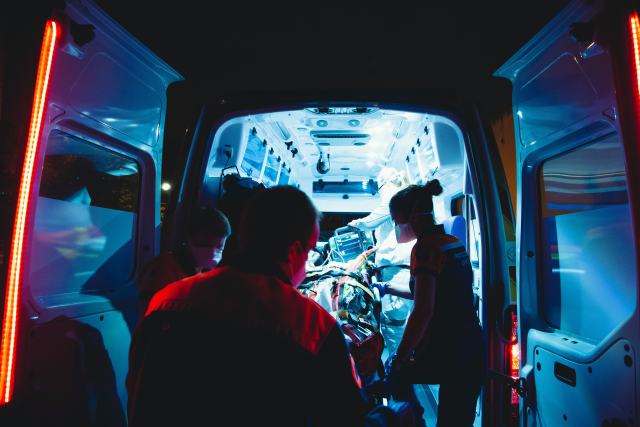
More than 100 new paramedics are hitting the road across Victoria as new data shows demand for emergency ambulances is rising sharply again for winter.
Ambulance Victoria Executive Director Clinical Operations Anthony Carlyon said the fourth quarter of 2022/23 was Ambulance Victoria’s third busiest on record, with ambulance responses impacted by a 5.5 per cent increase in demand compared to the previous quarter.
“Every winter we see demand rise, and this year is still challenging as COVID-19 and influenza spreads, and more staff are furloughed due to illness,” Mr Carlyon said.
“April to June saw ambulances called to 97,509 Code 1 cases, which is more than 5,000 additional ‘lights and sirens’ cases compared to the previous three months. This is a huge 29.3 per cent increase from 75,398 Code 1 cases five years ago before the pandemic hit.
“This winter we again urge you to help our paramedics, first responders and hospitals by saving Triple Zero (000) for emergencies and accessing alternative care options which can better meet your needs.”
From April to June, paramedics and first responders across Victoria responded to 61.7 per cent of Code 1 cases within the state-wide average target of 15 minutes. The state-wide average response time to Code 1 emergencies was 16 minutes and 4 seconds.
Between April and June, an average of nearly 88 staff were furloughed every day due to COVID-19. As a wave of COVID-19 spread during the quarter, the number of staff furloughed increased from a low of 54 on 1 April to a peak of 149 on 24 May.
On top of staff furlough and increasing winter demand, Ambulance Victoria was also impacted by the pressures felt across the entire emergency care system.
Mr Carlyon said to help respond to increasing demand and get more ambulances on the road and to patients quicker, Ambulance Victoria had recruited 118 new graduate paramedics over the past month.
“This builds on our record recruitment of more than 1,300 paramedics over the past two years,” Mr Carlyon said.
On 24 July, 54 new graduate paramedics hit the road at ambulance branches across Victoria and 64 started their careers at Ambulance Victoria with a four-week induction training program.
Of the 118 new graduates, 73 will go to branches in the Metro Region, 10 in the Gippsland Region, nine in the Loddon Mallee Region, 10 in the Grampians Region and 16 in the Hume Region.
“We welcome all our new graduate paramedics and wish them the best for long and rewarding careers at Ambulance Victoria,” Mr Carlyon said.
Mr Carlyon said Ambulance Victoria has evolved into a modern health service that ensures our patients get the right care, at the right time, in the right place. We are more than just lights and sirens.
“For less urgent cases, we’ve tripled the size of our secondary triage team and have referred more than 40,000 patients to the Victorian Virtual Emergency Department (VVED) since October 2021 to help avoid unnecessary trips to our hospitals where safe and appropriate,” Mr Carlyon said.
“While ambulances are always provided to patients when required, from April to June 38,994 people who did not need an emergency ambulance were instead connected by paramedics and nurses in our Secondary Triage team to more appropriate care.
“That results in 500 or more cases every day being safely matched to services that better suit their needs while also avoiding emergency dispatch,” Mr Carlyon said.
“Some people hesitate to call Triple Zero (000) because they are not sure if their situation is an emergency. If in doubt, always call Triple Zero (000) and the trained call-taker will help and direct you.
“Meanwhile, our Medium Acuity Transport Service (MATS) crews dedicated for less-urgent calls are freeing up more ambulances to respond to the most critically ill patients.
“Despite our current challenges, our dedicated paramedics continue to deliver safe and high-quality patient outcomes, including Australia’s best cardiac arrest survival rates.”






